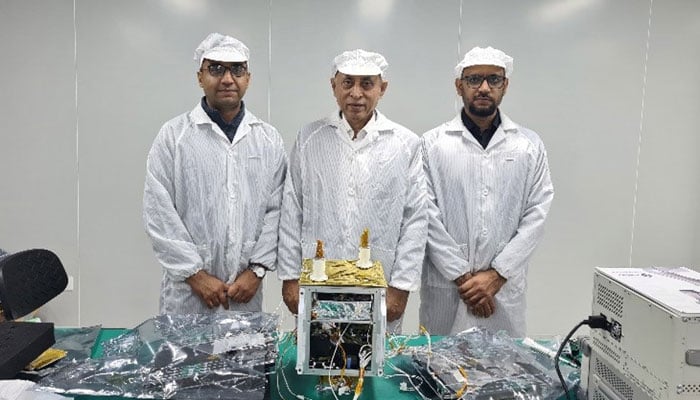Chang'6 will land on the moon's far side in order to gather surface samples and then travel back to Earth for further study.

ISLAMABAD On Friday, May 3, China's Chang'E6 is scheduled to launch Pakistan's historic lunar mission (ICUBE-Q) from Hainan.
The Institute of Space Technology (IST) claims that it worked with Pakistan's national space agency Suparco and China's Shanghai University SJTU to design and develop the satellite ICUBE-Q.
The lunar surface is imaged by two optical cameras carried by the ICUBE-Q orbiter. Now that qualification and testing have gone well, ICUBE-Q has been successfully integrated into the Chang'e6 mission. The sixth in China's series of lunar exploration missions is called Chang'e6.

China's Lunar Mission, Chang'6, will land on the moon's far side in order to gather surface samples and bring them back to Earth for analysis.
Pakistan would benefit from the mission since it will carry a Pakistan CubeSat Satellite, called iCube-Q, which was created by IST.
CubeSats are tiny satellites that are primarily distinguished by their uniform design and compact size. They are built in the form of a cube and are made up of modular parts that follow predetermined dimensions.
These satellites are regularly placed in orbit for a variety of uses and only weigh a few kilogrammes.
CubeSats are primarily used to support space exploration-related scientific research, technology development, and educational programmes. Numerous missions, such as atmospheric research, earth observation, remote sensing, and atmospheric showcase of technology, astronomy, communications, and research.
CubeSats are a cost-effective and compact spacecraft that can be used by universities, research institutes, and commercial organisations to engage in space missions and collect important data for scientific study and innovation.
They facilitate access to space for a wider range of users and foster collaboration within the space community by acting as testing grounds for novel ideas and technologies.
Comments
Post a Comment